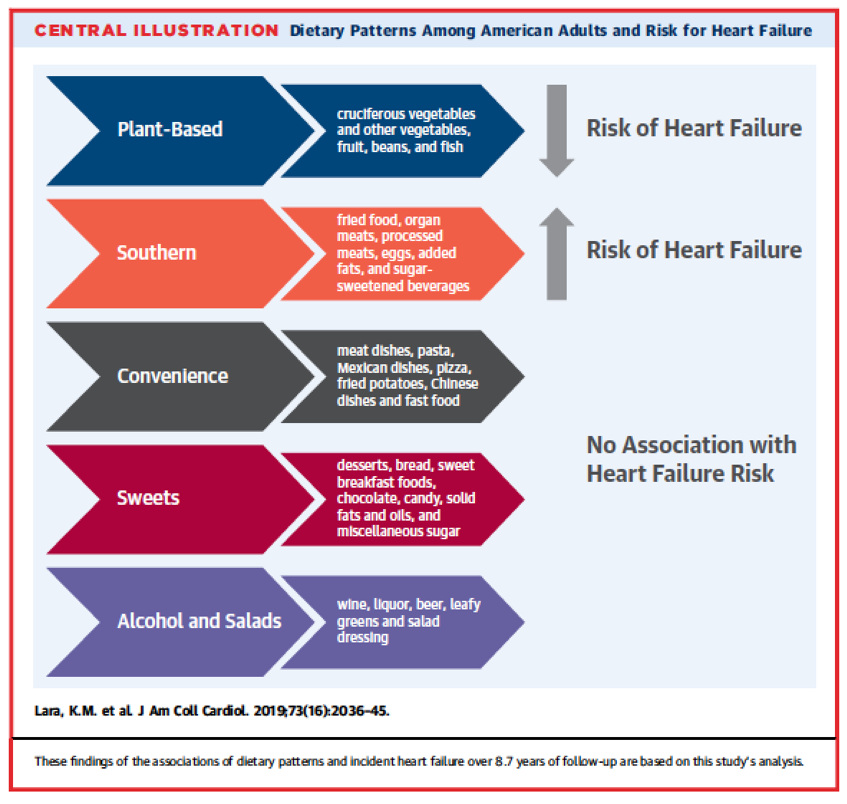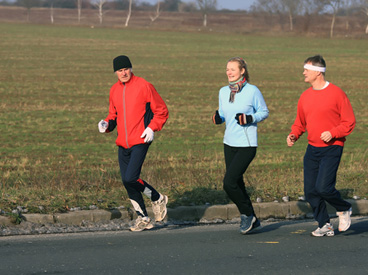Your Health Checkup: The Hazards of Ultra-processed Foods
“Your Health Checkup” is our online column by Dr. Douglas Zipes, an internationally acclaimed cardiologist, professor, author, inventor, and authority on pacing and electrophysiology. Dr. Zipes is also a contributor to The Saturday Evening Post print magazine. Subscribe to receive thoughtful articles, new fiction, health and wellness advice, and gems from our archive.
Order Dr. Zipes’ new book, Damn the Naysayers: A Doctor’s Memoir.
I’m not much of a junk food eater, although I do like an occasional Steak ‘n Shake double cheeseburger, or a Big Mac with French fries — maybe a half dozen times a year — and, more often, a grilled all-beef hot dog, smothered in mustard and drowning in sauerkraut. My mouth waters as I write this! Mostly, though, I try to eat a reasonably healthy diet, with emphasis on reasonably. However, the food experts are telling us with increasing clamor about the horrors of consuming ultra-processed food.
I wrote about this last year, making the point that ultra-processed foods are packed with artificial flavors, additives, or emulsifiers; typically contain more calories, sugar, fats, and salt than non-processed foods; and are linked to several kinds of cancer.
What, exactly, are ultra-processed foods? They usually consist of junk foods such as chips, cookies, and fast foods like prepackaged dinners. Such foods are industrial formulations with little intact food, generally containing low nutritional value, lots of calories, and multiple ingredients to enhance flavor and prolong shelf life. Consumption of these foods has almost tripled between 1990 and 2010, from 11 percent to 32 percent of daily energy intake.
In addition to studies I mentioned previously, several new reports underscore the potential harm of this bad diet. In a study from Spain of almost 20,000 people followed for 15 years, people in the group consuming the most ultra-processed food (>4 servings daily) had a 62 percent greater risk of death than those consuming the least amount. The more ultra-processed food one consumed, the greater the risk, so for each additional serving, mortality increased by 18 percent. A study of over 100,000 French participants showed that greater consumption of ultra-processed foods was associated with increased risk of heart attacks and strokes.
A similar study from the U.S. found that individuals in the highest quartile of eating ultra-processed food — stuff like sugar-sweetened or artificially sweetened beverages, sweetened milk, sausage, sweetened cereals, and desserts — had a risk of all-cause mortality that increased by 31 percent. A much larger study of 44,500 participants from France also found higher mortality among those consuming ultra-processed foods, but interestingly also noted that these participants were more likely to be younger, live alone, to be physically inactive, have a lower income, a lower educational level, and a higher body mass index. It is important to remember that some of these lifestyle influences can also contribute to mortality.
So, which is cart, and which is horse? Do the lifestyle patterns contribute to eating junk food or does eating junk food impact lifestyle? Very likely both are operative and affect the development of cardiovascular and cerebrovascular diseases in this population.
These epidemiological reports are observational, and direct causality cannot be firmly established. But if the mortality outcomes are not sufficiently convincing to eat a proper diet, how about gaining or losing weight? For this there exists “hard science.”
A trial of twenty inpatient adults randomized to consume ultra-processed versus unprocessed food, each for fourteen days, found that those eating ultra-processed food consumed more calories and gained about two pounds during that time period while those eating unprocessed food consumed fewer calories and lost about two pounds.
Like many of us, I’m a bit overweight and I don’t need much more convincing to limit my ultra-processed food intake than that outcome!
So, readers, eat well, exercise, stop smoking, keep your blood pressure and cholesterol under control, and enjoy good health.
But I still can taste that delicious hot dog!
Featured image: Shutterstock
Your Health Checkup: Breakfast, Diet, and Exercise
“Your Health Checkup” is our online column by Dr. Douglas Zipes, an internationally acclaimed cardiologist, professor, author, inventor, and authority on pacing and electrophysiology. Dr. Zipes is also a contributor to The Saturday Evening Post print magazine. Subscribe to receive thoughtful articles, new fiction, health and wellness advice, and gems from our archive.
Order Dr. Zipes’ new book, Damn the Naysayers: A Doctor’s Memoir.
In my last column, I discussed the risks of eating eggs for breakfast. I hope that information encouraged readers to substitute another food, such as bananas, yogurt, or cereal and fruit, and not stop eating breakfast, since skipping breakfast entirely appears to carry its own risk.
Investigators analyzed the eating habits of a nationally representative group of 6,550 participants aged 40 to 75 years (with a mean age of 53 years, almost half males), and followed them for 17 to 23 years. After adjusting for multiple confounding factors (always a weak point in such studies), they found that participants who never ate breakfast compared with those who ate breakfast everyday had an 87 percent increased risk for cardiovascular mortality and a 19 percent increased risk for death from any cause.
The authors noted that breakfast is an important meal, but almost 25 percent of young people skip it every day. They cite a host of health risks from doing so, including obesity, lipid problems, hypertension, diabetes, and coronary and cerebrovascular disease. This study doesn’t prove causality but only an association and other factors may be important as well.
As I have stressed, what you eat is as important as when you eat. In a study of 16,068 individuals with a mean age of 64 (slightly more than half women and a third African American), the authors evaluated five types of diet: plant-based, southern, convenience, sweets, and alcohol and salads (see figure.) Those individuals adhering to a plant-based food diet including vegetables, beans, fruit, and fish enjoyed a 41 percent reduction in heart failure. Those who ate a diet loaded most heavily with fried foods, organ meats, processed meats, eggs, added fats, and sugar-sweetened beverages had a 72 percent increased risk of heart failure. The results of this study show that adhering to a plant-based diet reduced heart failure risk in a diverse population of American adults, even when they had hypertension, a known risk factor for heart failure.

Another recent study of over 400,000 men and women from nine European countries followed for 12 years found essentially the same dietary risks for red and processed meats, in this instance causing coronary artery disease (heart attacks).
And finally — I know I keep harping on it— physical activity is critically important. People can offset the impact of sitting at work all day, which is associated with an increased risk of all-cause and cardiovascular death among the least physically active adults, if they perform moderate-to-vigorous physical activity in doses that meet current recommendations.
Because walking and vigorous physical activity can most consistently reduce the risks of cardiovascular disease and premature mortality caused by sitting all day long, go do it, starting today! Walk the dog, play ball with your kids, join a fitness center, but do something!
Featured image: Shutterstock.com
Get Your Diet Back on Track

The holidays are long gone, and the time of reckoning has come.
A month ago, we switched from party-goer to gym-goer, from festive cheer to mid-winter resolve. But by now, you may be having a post-holiday showdown with the bathroom scale, and the results are disappointing. Or you’re feeling sluggish and lackluster after weeks of snowed-in cabin fever without exercise.
Still, don’t let a slow starting pace discourage you. The key to getting back on track is to adopt the right frame of mind. Instead of berating yourself for slacking off, use a strategy called “framing” to isolate and contain the unhealthy indulgences that might have occurred. Just as a physical frame surrounds a picture, behavioral framing surrounds a splurge with a solid boundary of good habits. By reinforcing your exercise program and healthy eating plan before and after an indulgence, you give yourself permission to savor special treats, secure in the knowledge that the next day you’ll be right back on track. After all, a single day—or even several—won’t ruin your healthy lifestyle; it’s the long-term pattern that counts.
Now that we have a small dent in the New Year, don’t let a day or week of splurging turn into a month; the longer you go, the more slippery the slope and the tougher it is to get back on track.
Top Tips for Getting Back on Track:
Keep drinking.
Swap out festive libations for water! Try to drink 8 to 12 glasses each day—more if you’re working out. A recent study published in the journal Obesity found that drinking two cups of water prior to meals helps drop more pounds than without hydration. Water makes you feel full, and provides your body with the hydration it needs for optimum function. If you dislike the lack of flavor, add herbs like mint or basil or slices of citrus fruits or cucumber to a pitcher of water.
Swap cans and boxes for fresh food.
Stay away from processed foods in cans and boxes and start buying more fresh foods. You don’t have to be a fancy cook—buy a simple cookbook, and you may surprise yourself at the chef you find within and, in the long run, you’ll save money too.
Swap food rewards for non-food rewards.
It’s so easy to reach for a donut or candy at work when we’re having a stressful day. And after a rough day so many of us drown our worries in a cocktail (or two) or a rich comforting dinner to soothe ourselves into feeling better (temporarily!). Pay attention to emotional eating which causes us to make poor choices and even to eat when we’re not hungry. If an emotional trigger of stress or loneliness sabotages your best intentions, increase your awareness and substitute a hot bath, a book, or a walk for a bag of chips or bowl of ice cream.

Get moving.
There’s nothing like an intense workout to combat winter blues. Although it may seem counterintuitive, exercise actually gives you more energy —and if you add weight training to your routine, you’ll build muscle mass and boost your metabolism, helping drop pounds even faster. If you haven’t added a workout into your weight loss plan, you may find that your stamina and strength have diminished a bit, but don’t let that hamper your restart effort. Keep moving on a regular basis, and you’ll soon find your fit self.
Swap fear for confidence.
As Eleanor Roosevelt once said: “Do something each day that scares you.” Take a swim class. Dust off your bicycle. Join a hiking club. Experiment til you find an activity you really enjoy. If you actually look forward to your workouts, you’ve made huge progress!
Eat often.
Include a good source of lean protein with your breakfast to feel full longer, and then eat five to six small meals a day. In a meal-skipping study at the National Institute on Aging, people who skipped meals during the day and had all of their calories at one nightly meal exhibited unhealthy changes in their metabolism, similar to unhealthy blood sugar levels observed in diabetics. And, of course, skipping meals or snacks increases your chances of coming to the table famished at the next meal and over-eating or making less healthy food choices.
Get plenty of sleep.
It’s easier to overeat when you’re tired, and fatigue can make it hard to stick to your work out plans. Caffeine, sugar and simple carbs are the worst choices for a pick-me-up, but they’re what we frequently turn to when sleep-deprived. Aim to get eight hours of sleep per night, and/or try taking short naps during the day. As extra insurance, pitch the junk food and have healthy snacks in the house at all times. That way, if a fatigue-induced craving does hit, the only choice you can make will be a good one.

Cheryl Forberg RD is a New York Times bestselling author and a James Beard award-winning chef. Cheryl co-wrote the eating plan for NBC’s “The Biggest Loser” and was the show’s nutritionist for twelve seasons. Her latest book is Flavor First, and she writes a blog of cooking and nutrition tips. Follow her on Twitter and Facebook for more tips and recipes. And continue to read the Saturday Evening Post website for more regular nutrition tips and features from Cheryl.